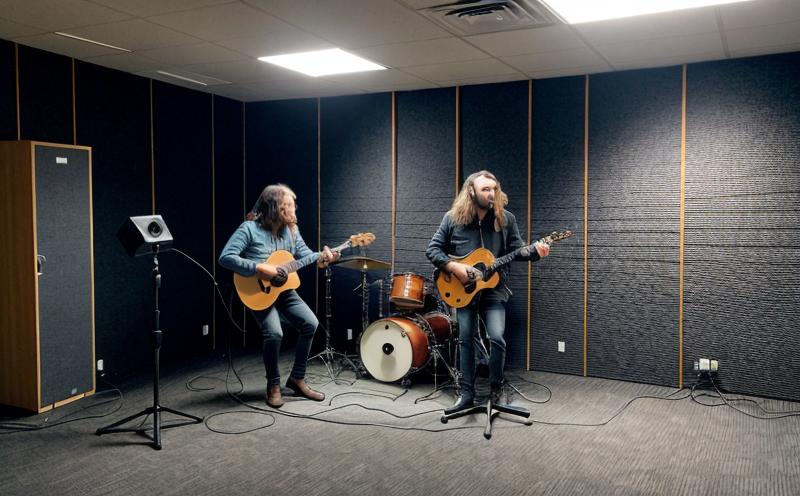DIN 45635 Measurement of Noise in Ventilation Systems
The measurement of noise in ventilation systems is a critical aspect of ensuring the comfort and health of building occupants. DIN 45635 is an international standard that provides comprehensive guidelines for measuring sound levels within HVAC (Heating, Ventilation, and Air Conditioning) equipment. This service ensures compliance with industry standards and helps manufacturers improve product performance by identifying areas where noise reduction can be achieved.
DIN 45635 covers the measurement of airborne noise emitted from ventilation systems, which includes fans, ducts, grilles, and other components that contribute to overall sound levels. The standard specifies methods for measuring both steady-state and transient conditions under various operating conditions, ensuring accurate assessments regardless of environmental factors or system load.
The primary goal of this service is not only to meet regulatory requirements but also to enhance the acoustic quality of HVAC systems in commercial buildings, residential complexes, industrial facilities, and public spaces. By adhering to DIN 45635, clients can ensure their products comply with international standards while maintaining high levels of performance and efficiency.
Our team specializes in providing precise measurements using advanced equipment calibrated according to the latest editions of relevant ISO, EN, ASTM, IEC, and other recognized standards. This ensures accurate data collection and reliable results that are repeatable across multiple test runs or locations.
Applied Standards
DIN 45635 is one of several international standards used in the HVAC industry for measuring noise levels. Our laboratory adheres strictly to these guidelines when conducting tests:
- DIN 45635-1:2019-08 – General requirements and measurement methods.
- DIN EN ISO 1996-1:2017 – Acoustics – Measurement of sound pressure levels in the environment – Part 1: Measurement techniques for general purposes.
- ISO 3745:2012 – Noise emitted by machinery and equipment – Determination of steady-state sound power level and sound pressure level in an open space or room.
By following these rigorous standards, we guarantee accurate, repeatable results that meet the highest industry expectations. This commitment to quality ensures our clients receive reliable information they can trust when making decisions about product design, manufacturing processes, and regulatory compliance.
Industry Applications
| Sector | Application Area |
|---|---|
| Residential Buildings | Evaluating noise levels in home ventilation systems to enhance comfort and reduce complaints. |
| Commercial Spaces | Maintaining optimal acoustic conditions for offices, retail environments, and restaurants. |
| Industrial Facilities | Assessing compliance with local regulations regarding industrial noise pollution. |
| Parking Garages | Monitoring sound levels to minimize disturbance to nearby residents and staff. |
- Identifying sources of noise in HVAC systems for targeted improvements.
- Determining appropriate sound insulation measures to prevent unwanted transmission between spaces.
- Evaluating the effectiveness of silencers, mufflers, and other noise-reducing devices used in ventilation systems.
Through our comprehensive testing services based on DIN 45635, we help clients across different sectors ensure that their HVAC equipment meets stringent acoustic performance criteria. This ensures not only regulatory compliance but also enhances the overall experience for users by reducing noise levels and improving indoor air quality.
Environmental and Sustainability Contributions
The reduction of noise pollution is a key component in promoting sustainable practices within the HVAC industry. By minimizing unwanted sounds generated by ventilation systems, we contribute to creating healthier indoor environments while reducing energy consumption associated with heating, cooling, and ventilating spaces.
Educational institutions benefit from quieter classrooms and laboratories where students can focus better without being distracted by excessive noise levels. Healthcare facilities see improved patient recovery times as reduced background noise allows for more restful sleep and less stress among staff members. Additionally, quieter HVAC systems are often more energy-efficient since they do not need to work harder to overcome unnecessary resistance caused by excessive sound.
Our services play an important role in supporting these goals by helping manufacturers develop quieter products that comply with international standards like DIN 45635. This contributes positively towards reducing the environmental impact of HVAC systems and promoting a more sustainable future for all sectors involved in this field.





